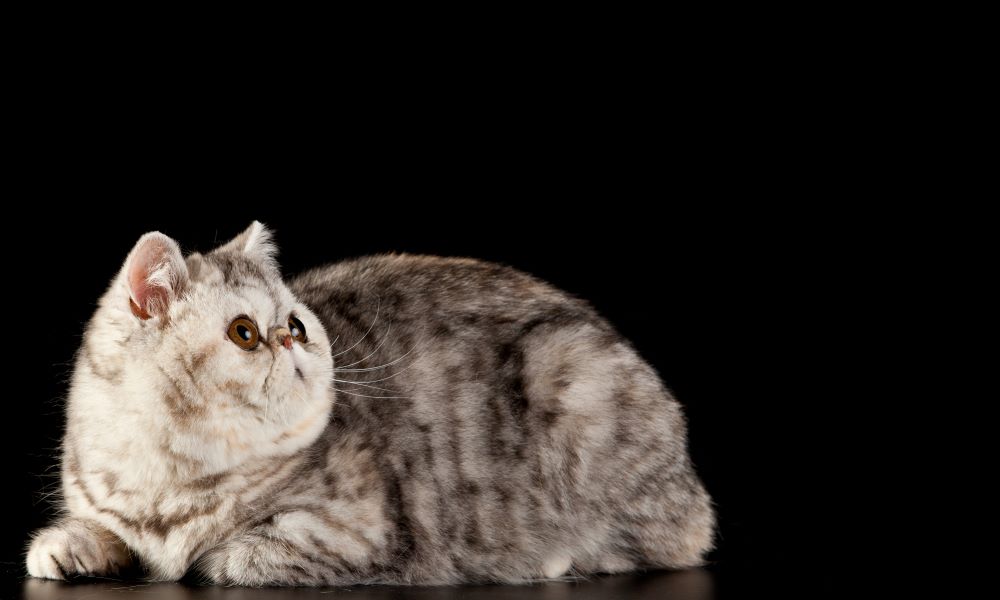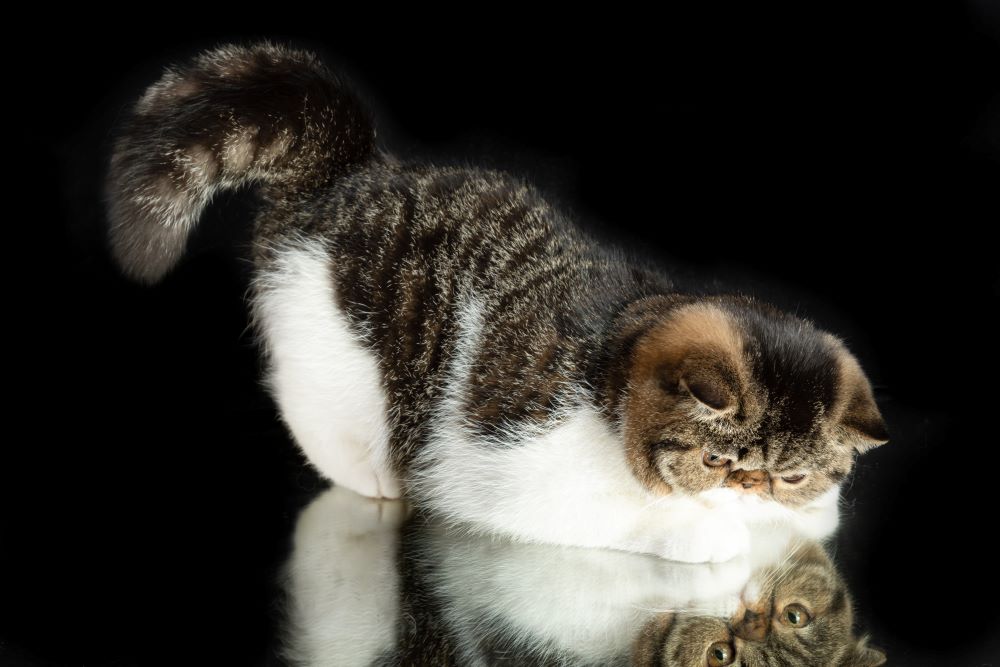Get Pet Insurance for your Cat & Dog

Zero
Documentation
Quick
Claim Process
Affordable
Premium
Terms and conditions apply*
- {{species}}
- {{indoorOutdoor}}
- {{suminsured}}
Exotic Shorthair Cat Breed Characteristics & Information

Exotic Shorthair cats have captivated the hearts of feline enthusiasts worldwide. Their distinctive appearance, gentle, affectionate demeanour, and loving nature make them an adored breed among cat lovers.
These cats often enjoy being held and thrive on human companionship, revelling in cuddles and affection. In this article, we will be exploring their unique characteristics, training tips, health concerns, and care needs.
What Defines Exotic Shorthair Cats?
Exotic Shorthair cats, a cross between Persian and American Shorthair breeds, boast a striking appearance characterised by their short, plush coat and round, expressive eyes. Exotic Shorthairs are sought after due to their resemblance to Persians without the extensive grooming needs. They make excellent pets due to their affectionate and laid-back nature.
What are the Characteristics of Exotic Shorthair Cats?

Knowing specifics of an Exotic Shorthair's characteristics helps you provide them the finest care possible. Some important characteristics of Exotic Shorthair Cats are as follows.
Lifespan: Exotic Shorthairs typically have a lifespan of 8 to 15 years, provided they receive proper care and attention.
Height: They have a medium to large build, showcasing a compact, muscular physique, standing 10 to 12 inches tall.
Colour: Exotic Shorthairs come in a diverse range of colours like black, white, golden, smoke, and silver and patterns, including tabby, solid, bicolour, and more.
Weight: These cats generally weigh between 3.5 to 5.5 kg, varying based on gender and genetics.
Behaviour and Personality: Exotic Shorthair cats have a sweet and gentle nature. They enjoy being around human companions and can be playful with other cats.
Living Conditions: They adapt well to apartment living and climate-controlled indoor places but also enjoy access to outdoor spaces if safely provided.
Temperament: They exhibit a docile and affectionate temperament and are not known for aggression; they tend to have a calm, playful and friendly attitude
Coat and Breed: They have a short and dense coat and they belong to the Purebred cat breed.
Isolation Period: While they enjoy human company, a proper environment can help prevent loneliness during periods of isolation; they shouldn’t be left alone for too long.
How to Train Exotic Shorthair Cats?
Although they may not be as trainable as other cats, Exotic Shorthairs can still be trained with consistency and patience. Here are a few tips for training them:
- Early Training: Start training and socialisation early to accustom them to various experiences. It will help to establish good behaviour and habits towards training.
- Mental Stimulation: Provide interactive toys and engaging activities to keep them mentally stimulated.
- Litter Training: Introduce litter boxes early and maintain cleanliness to establish good litter habits.
- Cat Tree: Offer climbing structures or cat trees to satisfy their natural inclination to climb and perch. This can help to keep them physically active.
- Basic Commands: Reward-based training can effectively teach basic commands like sit, stay, roll, high-five and come.
What are the Common Health Problems with Exotic Shorthair Cats?

They are susceptible to some health issues even though they are normally healthy. Here are six common health problems:
- Breathing Issues: The flattened face of Exotic Shorthair cats can restrict airflow, leading to breathing difficulties, especially during exercise or in hot weather. Symptoms may include snoring, snorting, and laboured breathing.
- Jaw Deformities: Brachycephalic features can also cause jaw deformities, which can make it difficult for cats to chew and eat properly. This can lead to dental problems and weight loss in Exotic Shorthair cats.
- Eye Problems: The shape of their eyes can make them prone to conditions like tear staining, entropion (inward-rolling eyelids), and ectropion (outward-rolling eyelids). These conditions can cause irritation and discomfort.
- Polycystic Kidney Disease (PKD): This genetic condition causes cysts to develop in the kidneys, which can eventually lead to kidney failure. PKD is a serious health concern for Exotic Shorthair cats.
- Hypertrophic Cardiomyopathy (HCM): This is a thickening of the heart muscle, which can impair heart function and lead to heart failure. HCM is a common health problem in Exotic Shorthair cats.
- Obesity: Exotic Shorthair cats are prone to obesity, which can exacerbate other health problems. Maintaining a healthy weight is crucial for their overall well-being. They can gain weight easily, so a balanced diet and exercise are essential.
How to Take Care of Exotic Shorthair Cats?
Exotic Shorthair cats require moderate to high maintenance compared to other cat breeds. Here are a few tips to keep them healthy and happy:
- Diet and Nutrition: Provide a balanced diet that should include turkey, seafood, meat, and dry and wet cat food.
- Feeding: Adult Exotic Shorthair cats typically require around 1/4 to 1/2 cup of high-quality cat food per meal, with two meals a day.
- Grooming: Weekly brushing is essential to remove loose hair and prevent matting. You should use a steel comb for brushing their coats.
- Exercise: Encourage regular physical activity through interactive play sessions and toys designed for indoor cats.
- Dental Care: Regular brushing and dental checkups are crucial to maintain oral hygiene and prevent dental problems.
- Eye Care: Inspect their eyes regularly for signs of irritation or discharge. Seek veterinary attention if you notice any abnormalities.
Exotic Shorthair cat's popularity stems not just from their striking appearance, reminiscent of Persians, but also from their amiable and affectionate nature. Understanding their distinct characteristics, from their short plush coats to their gentle temperament, helps potential owners create an environment conducive to their happiness and well-being.












